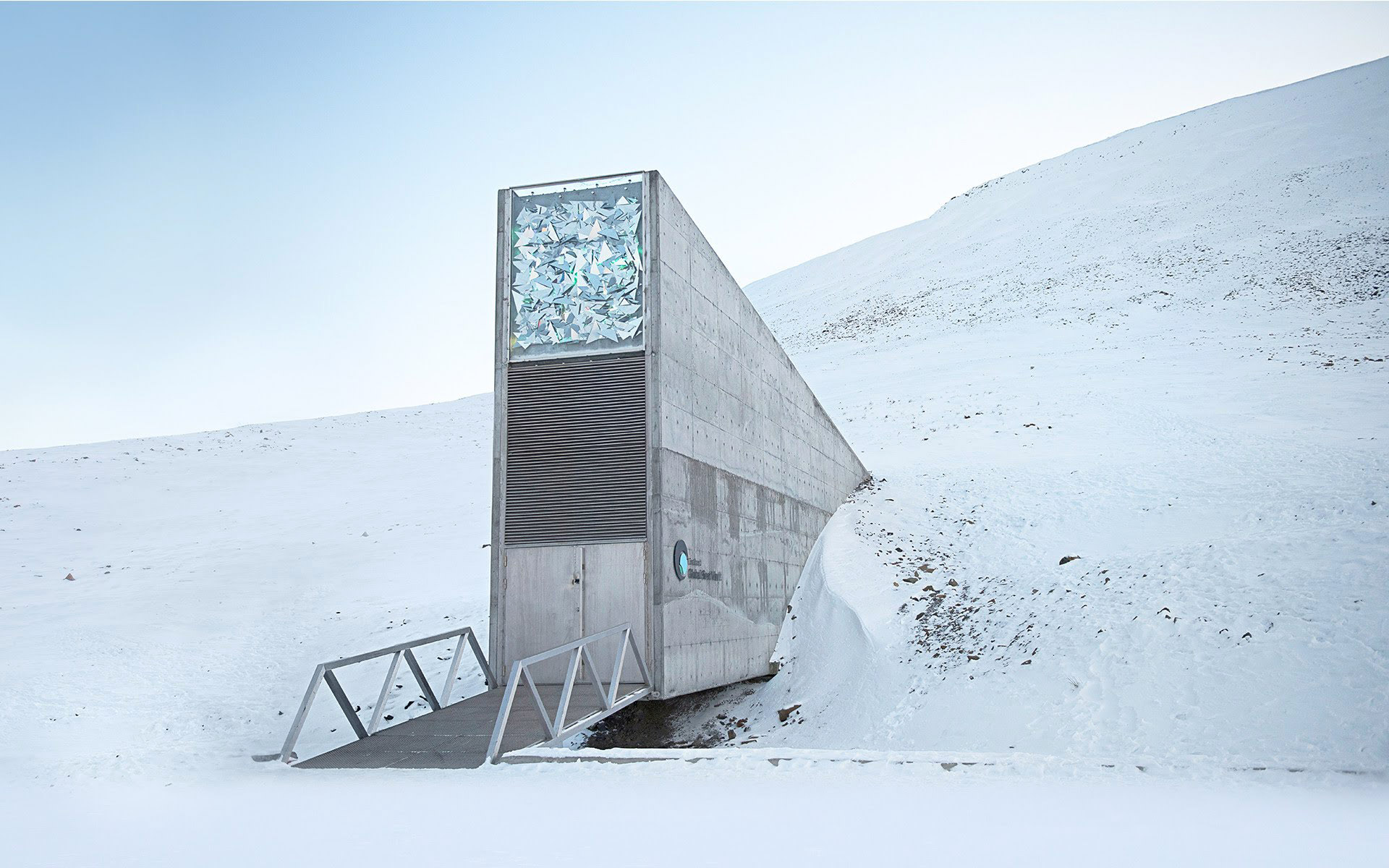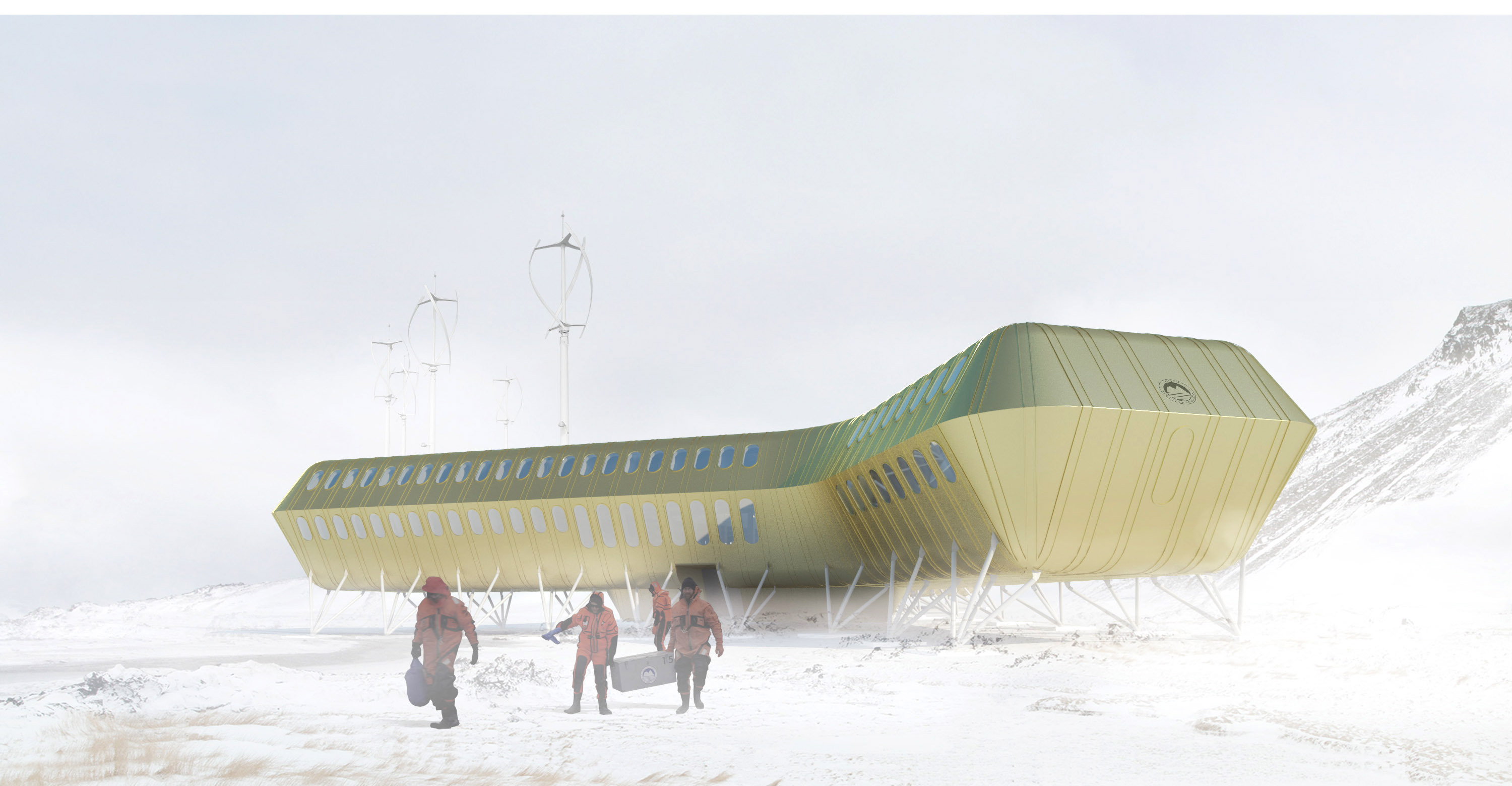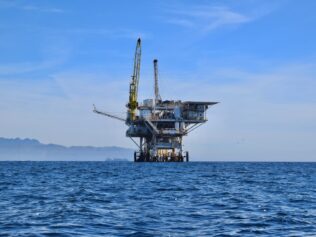
Ordinary mortals aren’t allowed in. There are no soldiers or guards in front of the entrance, but to cross the threshold you have to be sent by the organization that gathers products here. Sometimes journalists are allowed in too, but you have to wait a long time for approval. The doors are closed 350 days a year.
The Global Seed Vault was created in 2008 on Spitsbergen Island, 1300 kilometres from the North Pole, thanks to the efforts of the Norwegian government and two international organizations, the Crop Trust and the Nordic Genetic Resource Center. The main purpose of the seed bank is to collect duplicates or backup copies of the seeds that are collected in banks throughout the world; at the moment there are more than 1700 such institutions. All of this is done in case there’s a catastrophe, a war, or a natural disaster in some global region. You could ask: “And what if such a catastrophe happens on Spitsbergen?” It’s unlikely. By treaty, the island is a demilitarized zone. It’s the northernmost human settlement, far from the majority of conflicts, but not so far that contact is particularly difficult – charter flights arrive here regularly. Plus the cold climate, moderated by a warm westerly current, means the Svalbard archipelago is the ideal place to create an ‘ark’ of seeds that can rescue all of humanity if a mass tragedy occurs.
The main sponsor of the Global Seed Vault is the Norwegian government, which laid out $8.8 million to construct the building. Together with the Crop Trust, the government also pays for transport, logistics and courses on how to better protect the seeds. The procedure is simple. The seeds are placed in test tubes or aluminium vacuum packets, which are then stored in black plastic boxes. Next, the packets are transported to Spitsbergen. Without opening the boxes, the seeds are carefully scanned at the airport and immediately transported to the vault. Nobody other than the owners has access to them or can remove them.
It’s all based on total trust. Trust that the owners won’t send in bombs or genetically modified seeds (Norwegian law bans storing them in the country), and that the Norwegians won’t try to take ownership of the seeds. Until recently, it wasn’t possible to store the seeds of plants from which narcotics can be made, as possessing them in Spitsbergen – like all of Norway – is illegal. But after successful negotiations with the host in 2014, the Spanish seed bank Alchimia managed to deposit 21,500 seeds of a strain of Cannabis indica. In the hope, of course, that they’ll be of use to future generations.
At the moment, the Vault is home to more than one million types of seed, and with 500 samples of each, the treasure numbers 500 million seeds altogether. “This building holds 13,000 years of agriculture,” the Norwegian hosts like to say, stressing at the same time that diversification is essential, because it’s the only guarantee of finding the right variety of vegetable, fruit or grain that can survive in a world whose climate is changing so quickly. Definitely too quickly for plants like corn. Rising temperatures mean that over the next 20 years, corn production in Africa may fall by 30%. The more varieties of corn we gather, the higher the chance that at least one will be able to survive in the new conditions. Among the collected seeds are 32 varieties of potato from Irish national gene banks. Why so many? Because it’s believed that a lack of diversity played a key role in the spread of the blight in the 19th century that contributed to the Great Famine.
The Vault itself is not found – as newspapers sometimes erroneously report – on the site of an abandoned coal mine on Spitsbergen (where the first such Norwegian institution of this type was located). After tests in 2004, it turned out that the temperature of the permafrost over the chambers of that mine guaranteed only –3.5°C, which wasn’t cold enough. It was also feared that hydrocarbon gases, periodically escaping from the mine, could be bad for the seeds. Thus, it was decided to build a new facility nearby, this time in sandstone formations and with extra apparatus in the storage spaces that would maintain the ideal temperature for storing seeds: –18°C. The current building, constructed in 2008, is just over 1000 square metres. It’s a series of corridors reaching 146 metres into the rock. The front of the building is visible from outside the concrete gates, which push into the mountain like a wedge, while the crowning achievement is three 9 x 27 metre chambers drilled into the rock. The whole bank is located 100 metres above sea level, 60 metres below the summit of a hill. It’s high enough not to flood if all the ice in the world melts, and deep enough that at least 200 years will pass before the permafrost reaches a temperature of 0°C.
Yet nature has overcome bigger obstacles. In 2016, panic broke out in the media that the unsinkable ark had sprung a leak. Exceptionally high temperatures and unexpectedly intense precipitation meant that water got into the Vault, flooding the first 15 metres of the corridor. But before it got to the seeds, it froze again (the deeper inside the building, the colder it is), and the workers managed to break up and remove the ice. Although nothing happened to the seeds, the news was out, and the hosts reacted quickly. An immediate decision was made to improve the Vault’s structure. The modernization will cost $12 million – not a huge sum for the Norwegians.
Translated from the Polish by Nathaniel Espino









